41 office 365 labels classification
Office 365 Sensitivity Labels - SysKit Office 365 Sensitivity Labels Sensitivity labels enable us to classify and protect sensitive data within the file and the file itself. It will stay persistent with that file regardless of the file location. This way, users can continue to collaborate and let the sensitivity label worry about the protection. How to Create Strong Business Classification Schemes for Microsoft 365 Labels only support single-level taxonomy or classification. Labels (in most cases) rely on end users applying them and applying them correctly. To learn more about retention and disposal schedules and information architecture in Microsoft 365, be sure to download the full " Microsoft 365 Records Management Roadmap" ebook here .
Learn about data classification - Microsoft Purview (compliance) Data classification will scan your sensitive content and labeled content before you create any policies. This is called zero change management. This lets you see the impact that all the retention and sensitivity labels are having in your environment and empower you to start assessing your protection and governance policy needs. Prerequisites
Office 365 labels classification
Demystifying Labels in Office 365 | by Joanne Klein - Medium These labels are created in the Security & Compliance Center in Office 365 at protection.office.com. As of the time of this writing (December 2019), you will see it under the Classifications navigation heading. Q4: What are good things to know about this label? Protect Office 365 | Classifying Your Data with Microsoft's AIP Labels Microsoft Azure Information Protection is included in the Office 365 Enterprise E3 and above plans. Azure Information Protection Premium Plan 1: ... With AIP, a classification label is leveraged to identify and protect sensitive content that matters to your business. Admins and users may use out of the box or customized labels to either ... Differences between Azure Information Protection labels and Office 365 ... In the previous two posts, we looked at two capabilities of Azure Information Protection (AIP) P1, which is one of the many subscriptions bundled into Microsoft 365 Business: Email encryption & customization Labels for classifying messages and documents Recent announcements have shifted the sands a bit here with so-called "Unified labeling"-which refers to a separate […]
Office 365 labels classification. Information Labels/Classification or IRM? - Microsoft Tech Community IRM is based on Azure Information Protection (or it's sibling, Azure RMS). In general, which feature you should use depends on the scenario, but the unified DLP/retention experience in the SCC can/should be used instead of the Exchange-specific alternatives. And the SCC will soon offer the "protect" experience which you get as part of AIP. The benefits of deploying built-in labeling within Microsoft 365 apps The benefits of deploying built-in labeling within Microsoft 365 apps. During 2016, Microsoft introduced a new product that allowed organizations to implement a sensitivity label taxonomy and empower information workers to leverage these and apply them to documents or emails as part of daily work. This product is known as "Azure Information ... Apply sensitivity labels to your files and email in Office Select Add Sensitivity or Edit Sensitivity. Choose the sensitivity label that applies to your email. To remove a sensitivity label that has already been applied to an email, select Edit Sensitivity and then select Remove . Naturally if your organization requires labels on all files you won't be able to remove it. Use sensitivity labels with Microsoft Teams, Microsoft 365 Groups, and ... For this container-level classification and protection, use the following label settings: Privacy (public or private) of teams sites and Microsoft 365 groups External user access External sharing from SharePoint sites Access from unmanaged devices Authentication contexts (in preview)
Learn about sensitivity labels - Microsoft Purview (compliance) With sensitivity labels, you can classify data across your organization, and enforce protection settings based on that classification. That protection then stays with the content. For more information about these and other scenarios that are supported by sensitivity labels, see Common scenarios for sensitivity labels. Moving Groups, Teams, and Sites from Classifications to Sensitivity Labels Classifications and Sensitivity Labels Microsoft introduced classifications for Office 365 Groups (and latterly, Teams and SharePoint sites) in 2016. Classifications are text-only visual markers to... Using Office 365 to classify and secure your data - Content+Cloud Office 365 labels allow you to define a consistent set of labels within the Security and Compliance Center in Office 365. These translate to retention tags in Exchange and can be assigned to document libraries and files in SharePoint Online and OneDrive for Business. You can use labels to classify data as you see fit. Office 365 Labels (3 of 3): Unified Labeling - Techlemode For customers already using labels in either Office 365 or Azure/Microsoft Information Protection, a little thought ahead of time is best, because there may be unanticipated consequences to integrating the two. ... Sensitivity Labels have been a powerful part of Office 365 and Azure classification services. Until last year, there were two ...
Data Classification in Microsoft Office 365 - Netwrix Blog To create a label, open the Compliance Center, go to Classification > Sensitivity Labels and take the steps below. For more complete details, see this Microsoft page. Click Create a Label and accept the warning. Enter a name, tooltip and description for the label. Click Next. Office 365: Classification and Retention Labels - M365 Mike Classifying content across Office 365 services entails the use of Office 365 labels. These labels are used for records management and follow governance rules as laid out by the organization and by legal authorities. Three components comprise Advanced Data Governance: Using the Office 365 Audit Log to Track Retention Labels - Petri Office 365 retention labels (previously called classification labels) are part of the Office 365 data governance framework. They are applied by users to mark documents and messages to be kept for a... How to apply Office 365 labels when classifying documents Office 365 labels are very helpful in classifying the documents based on retention and sensitivity. We have seen how to apply labels to documents via REST API and CSOM. These methods can be used while provisioning or post provisioning. Transform your workplace with a multi award-winning Microsoft partner
Data classification for your Microsoft 365 for enterprise test ... From the Home - Microsoft 365 security tab of your browser, select Classification > Retention labels. Select Create a label. In the Name your label pane, enter Internal Public in Name your label, and then select Next. In the File plan descriptors pane, select Next. In the Label settings pane, if needed, set Retention to On, and then select Next.
Data classification & sensitivity label taxonomy - Microsoft Service ... Microsoft recommends no more than five top-level parent labels, each with five sub-labels (25 total) to keep the user interface (UI) manageable. Levels are typically arranged from least to most sensitive such as Public, Internal, Confidential, and Highly Confidential.
Announcing public preview of auto classification with sensitivity ... In addition to having users manually label files, you can configure auto classification policies in Microsoft 365 services like OneDrive, SharePoint Online, and Exchange Online. These policies can automatically label files at rest and emails in transit based on the rules you've set. Figure 1.
Document classification usnig AIP or unified labeling in O365 But we would like to classify all our documents with AIP or unified labels on Office 365. What is the best way to do this? 1. first migrate to SharePoint and then do the classification or. 2. Do the classification on all documents while sitting on the on-premises and then migrate.
Configuring Classifications for Office 365 Groups Behind the scenes, classifications are tied to Office 365 groups and defined at a group level, rather than tied to the data or SharePoint, Exchange, Microsoft Teams or other services. User Experience Group Classifications are displayed alongside the privacy of the group - for example, Private Group |Classification Name.
How Content Classification Works in Microsoft 365 - Proventeq By leveraging the principles of progressive classification, Microsoft 365 enables your organisation to classify content with sensitive and retention labelling. It applies AI and ML to detect content that: needs to be classified as containing sensitive information needs to be retained for a fixed duration of time
Outlook classification labels - office 365 - Microsoft Community Hi Hans. I found what I was looking for. It is not related to labels in "protection.office.com". As I also saw this creates an Assing policy, but not the Classification tag's on outlook. Instead it was In Azure information protection, and there I also found the old ones :-) Thanks again for you support and help. Case closed.
How to Classify Data in Office 365 - Lepide To create a label, you will need to go to the Compliance admin center and select Classification > Sensitivity Labels, where you will be asked to enter a label name, tooltip, and description. By default, labels appear in order of Confidential, Internal, and Public. Once you have defined your label, you can; Configure access permissions
Office 365 Published Labels not showing in OWA After finished, select the label you have created and click on Publish labels. Please test whether the issue persists for the newly created labels by opening OWA> New message> Protect> Change Permissions and try to select the new label. Please wait for 24 hours from creating the policy and then test it.
Differences between Azure Information Protection labels and Office 365 ... In the previous two posts, we looked at two capabilities of Azure Information Protection (AIP) P1, which is one of the many subscriptions bundled into Microsoft 365 Business: Email encryption & customization Labels for classifying messages and documents Recent announcements have shifted the sands a bit here with so-called "Unified labeling"-which refers to a separate […]
Protect Office 365 | Classifying Your Data with Microsoft's AIP Labels Microsoft Azure Information Protection is included in the Office 365 Enterprise E3 and above plans. Azure Information Protection Premium Plan 1: ... With AIP, a classification label is leveraged to identify and protect sensitive content that matters to your business. Admins and users may use out of the box or customized labels to either ...
Demystifying Labels in Office 365 | by Joanne Klein - Medium These labels are created in the Security & Compliance Center in Office 365 at protection.office.com. As of the time of this writing (December 2019), you will see it under the Classifications navigation heading. Q4: What are good things to know about this label?
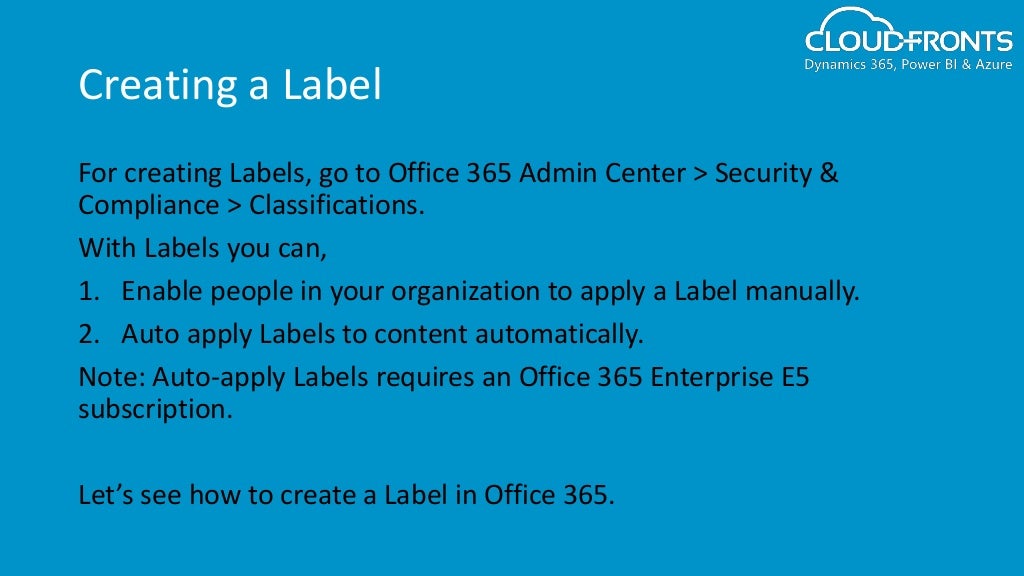

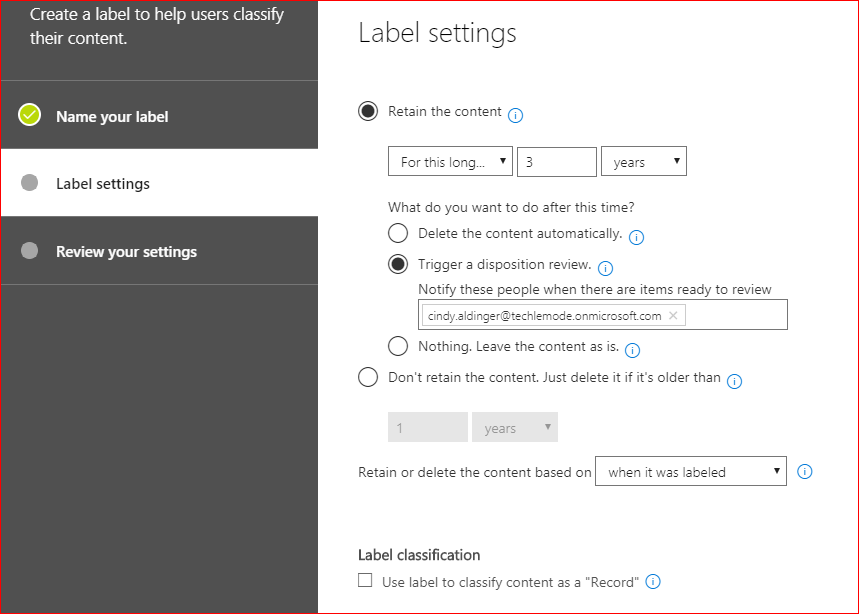
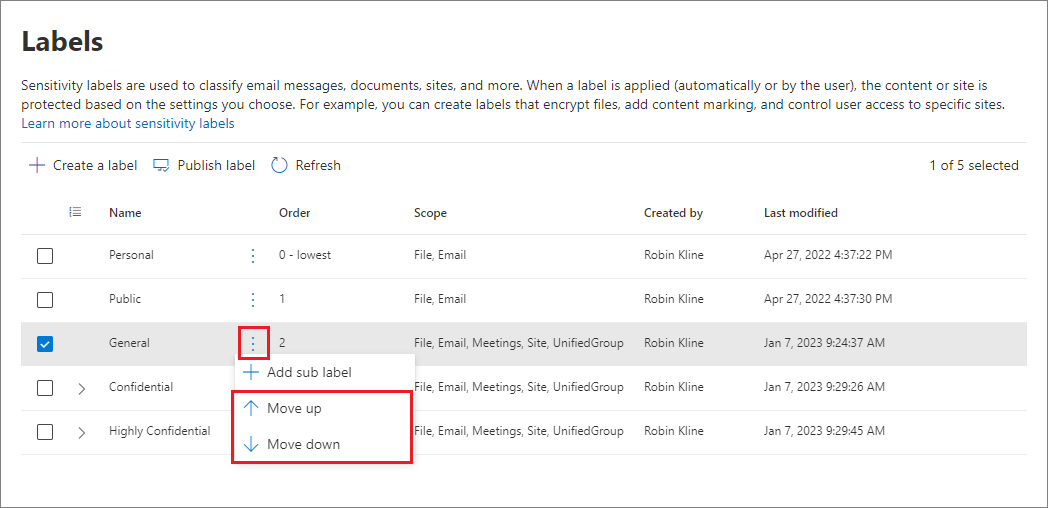



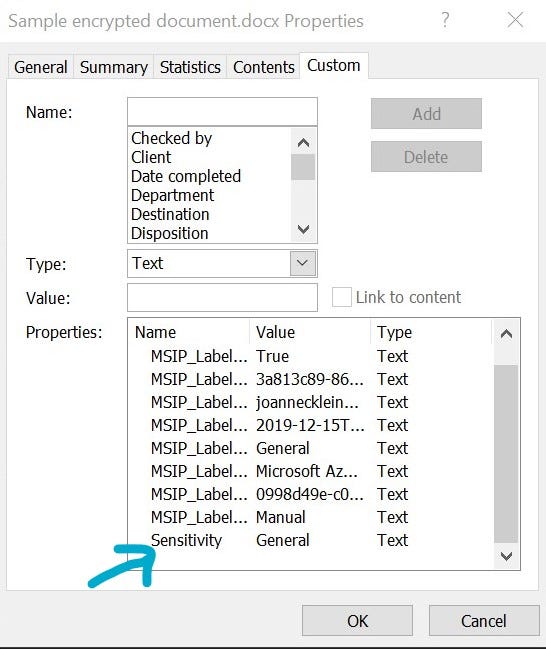
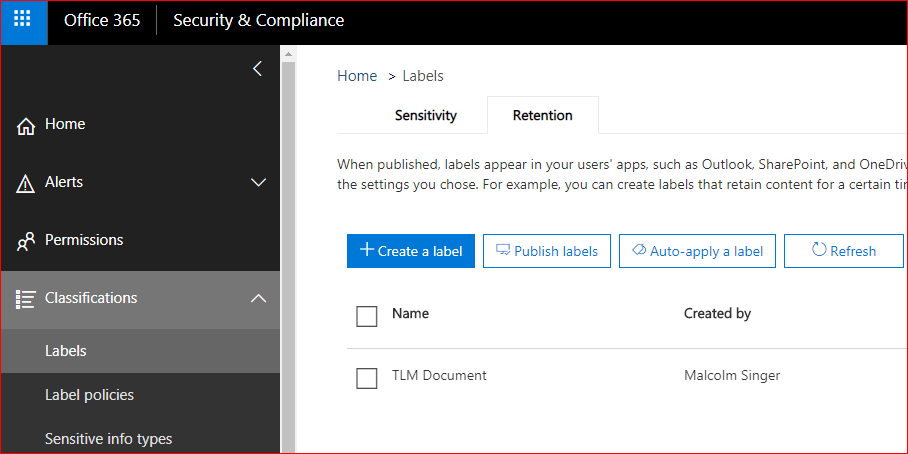



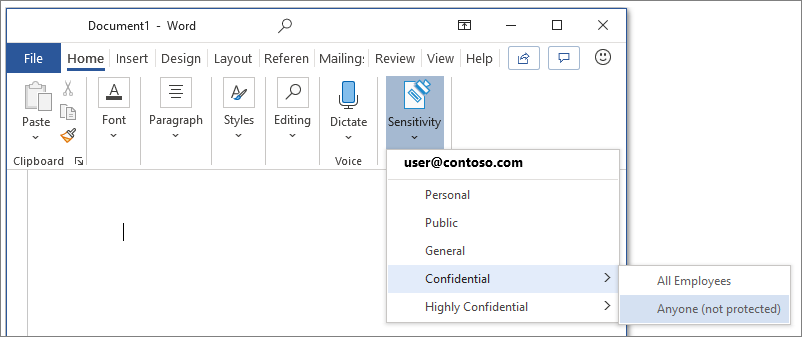





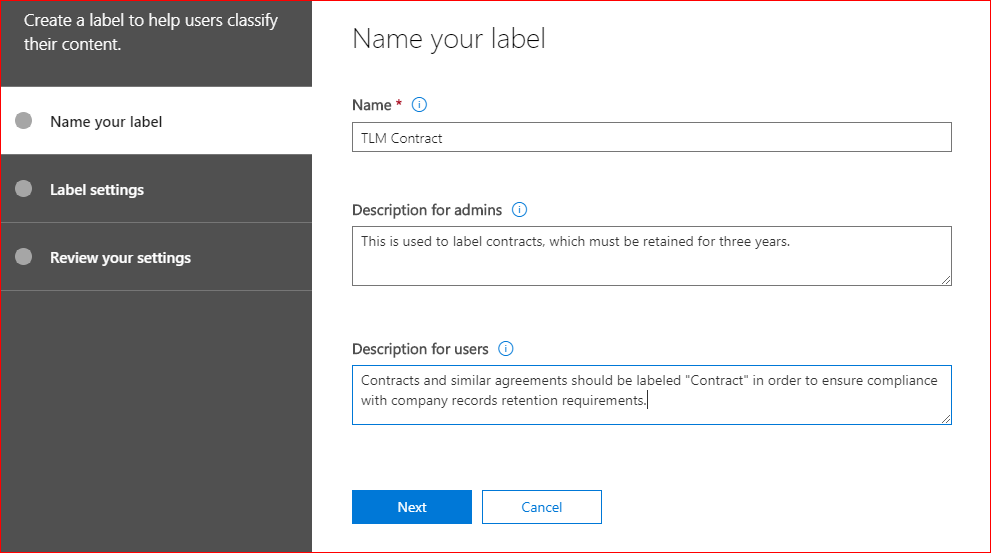




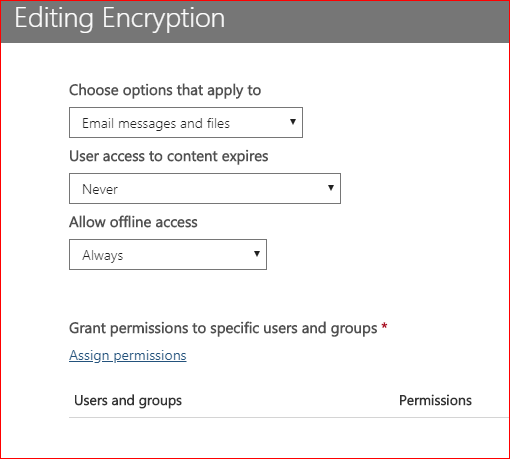


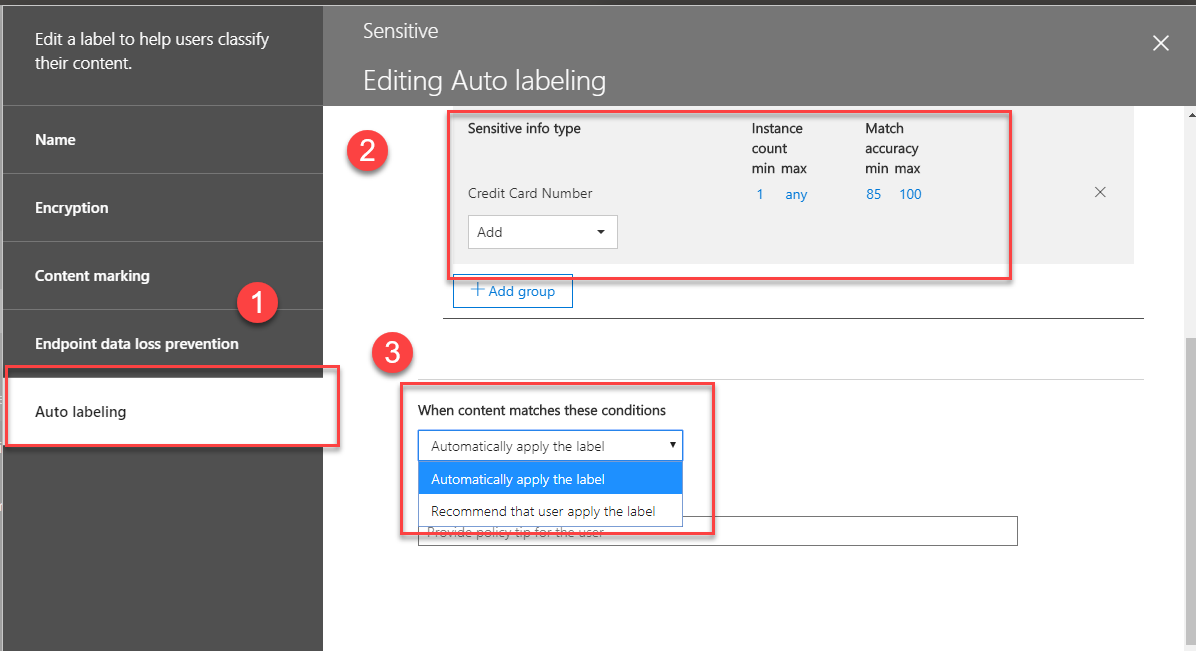



Post a Comment for "41 office 365 labels classification"